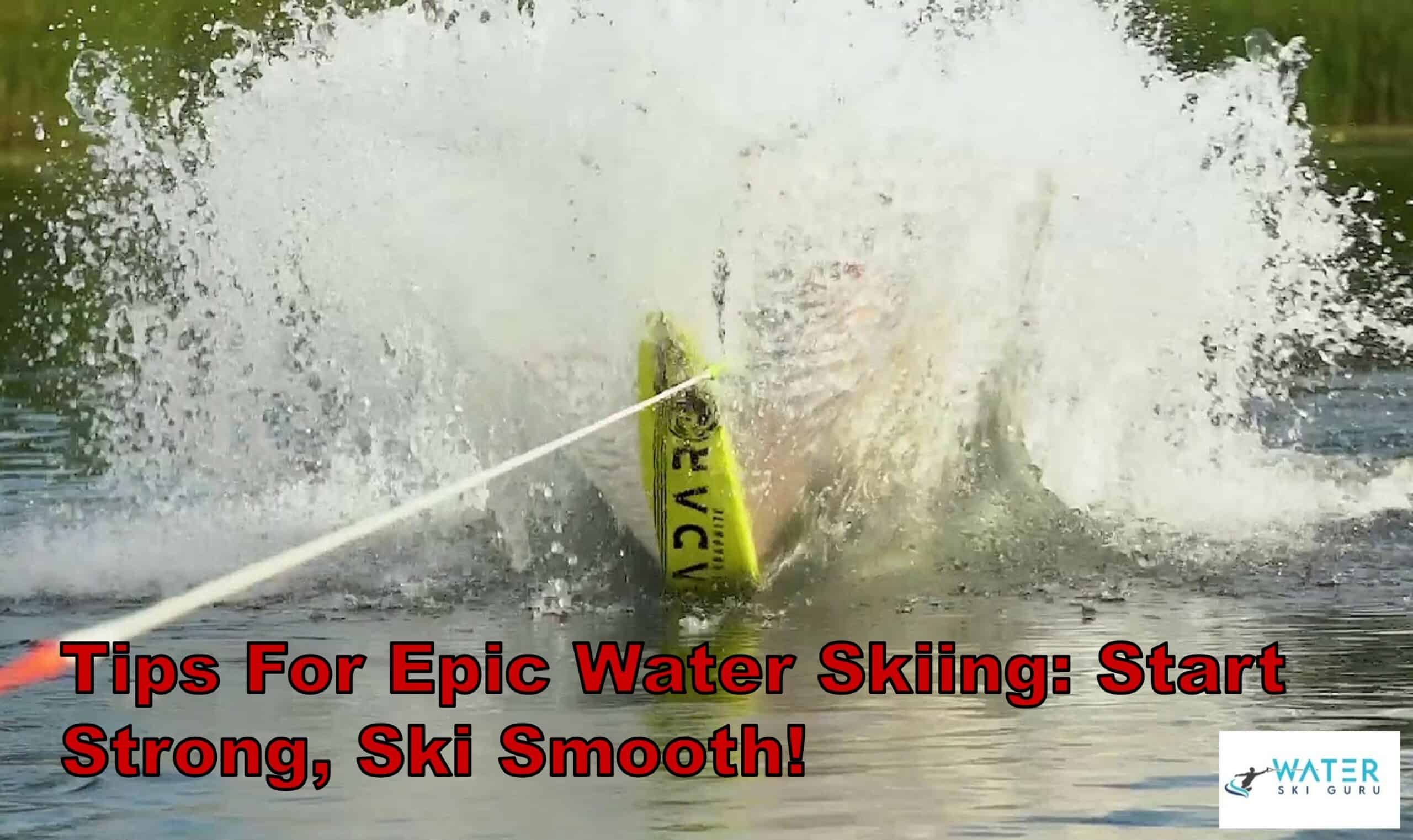As an experienced water skier, I know firsthand the thrill and excitement that comes with hitting the water. But, I also understand the importance of starting strong and skiing smoothly to avoid any mishaps or injuries. That’s why I’m here to share my tips and techniques for epic water skiing. Whether you’re a beginner or looking to improve your skills, this guide will provide you with everything you need to know to become a pro on the water.
First, let’s talk about starting strong. Before you even hit the water, it’s important to make sure you have the right equipment. This includes a properly fitting life jacket, skis, and rope. Make sure to check the condition of your equipment before every ride to ensure it’s in good working order.
Once you have your equipment ready, it’s time to get into position. Remember to keep your arms straight, knees bent, and weight centered over your feet. By starting strong and having the right equipment and body positioning, you’ll set yourself up for a smooth and successful ride.
Start and Equipment
I always avoid learning jump or beach start when water skiing. Instead, I prefer the deepwater start method. This method allows me to start in a more natural and stable position, which makes the entire experience smoother.
When it comes to equipment, I always make sure to wear low drag gear like wetsuits. This helps me move through the water more effortlessly, so I can focus on my technique.
Getting up on a single ski takes longer than on a wakeboard, but I find it to be a fun challenge. There are different methods for getting up on a single ski, but I prefer to drag my back foot and then put it in the kicker. The kicker helps secure my position and gives me more stability.
Another piece of equipment that can be useful is a tower. While it’s not necessary, a tower can provide more assistance and make the entire process easier. However, using a tower also has its cons, such as the added expense and the fact that it can take away from the pure experience of water skiing.
Techniques
Focusing on maintaining proper balance from side to side and pulling up slightly on the back foot can help prevent wipeouts like the one I experienced last summer when I lost my balance and tumbled into the water. To maintain balance, keep your back knee tucked in behind the front knee for strength.
Additionally, use your hips to push through and stand up on the skis. Your head can also be a useful tool for balance, so experiment with keeping your face down or eyes up to find what works best for you.
To ski smoothly, it’s important to use proper body position. Keep as much of the ski out of the water as possible and rest the ski against the rope for guidance. Use an overhand grip on the handle and start relaxed in the water.
As you begin to ski, allow your body to be pulled forward a little, which will create a breathing pocket. Pull up slightly on your back foot to maintain balance and take a moment to reset your balance before standing completely. Remember to resist the pull in balance and don’t fight the compression when the boat speeds up.
By following these balance techniques and maintaining proper body position, you can ski smoothly and confidently.
Frequently Asked Questions
What is the best time of day to water ski?
As an experienced water skier, I recommend early morning skiing for calm waters and optimal conditions. Sunset skiing can also provide beautiful scenery, but be prepared for windier conditions. Always check weather and water conditions before hitting the water.
How often should I replace my water ski equipment?
Taking care of water ski equipment is crucial for optimal performance. Regular maintenance can extend equipment lifespan, but it’s important to replace worn out parts such as bindings and ropes to avoid accidents on the water.
Can I water ski if I don’t know how to swim?
As someone who can water ski without knowing how to swim, it is important to take necessary safety precautions. Wear a life jacket and have a spotter in the water. Always stay within your comfort level and never go out alone.
What is the maximum speed that I should aim for when water skiing?
When water skiing, I aim for a maximum speed that I feel comfortable with and within the safety precautions. It’s important to gradually increase speed and communicate with the boat driver. Always prioritize safety over speed.
How do I know when it’s time to take a break while water skiing?
When water skiing, I manage fatigue by taking breaks when my arms feel tired. Hydration is key, so I bring water and drink regularly. I also pace myself and don’t push beyond my limits to avoid injury.
Conclusion
Well, that’s it folks! After all these tips and techniques, you’re now ready to hit the water and become the next water skiing sensation.
Just remember to start strong, ski smooth, and always put safety first.
But let’s be real here, even though we’ve given you all the tools to become an epic water skier, it’s not as easy as it seems. You’ll probably fall several times, get water up your nose, and feel sore for days after. But hey, that’s all part of the experience and what makes it so rewarding once you finally get the hang of it.
So, embrace the challenge and enjoy the ride. Happy skiing!

